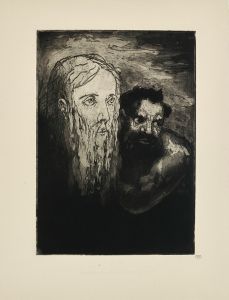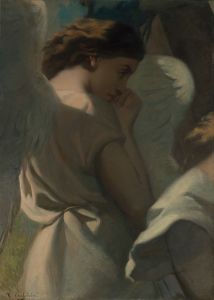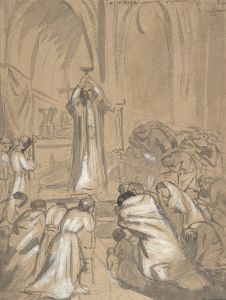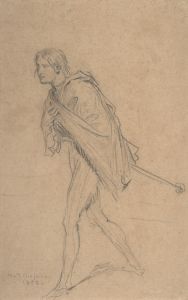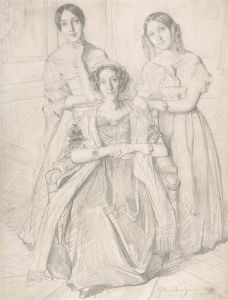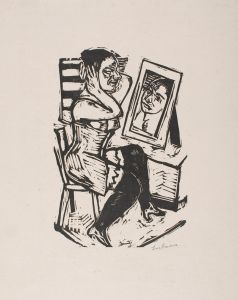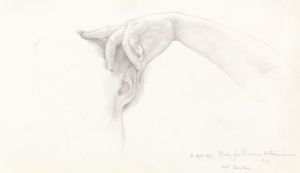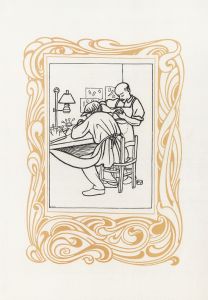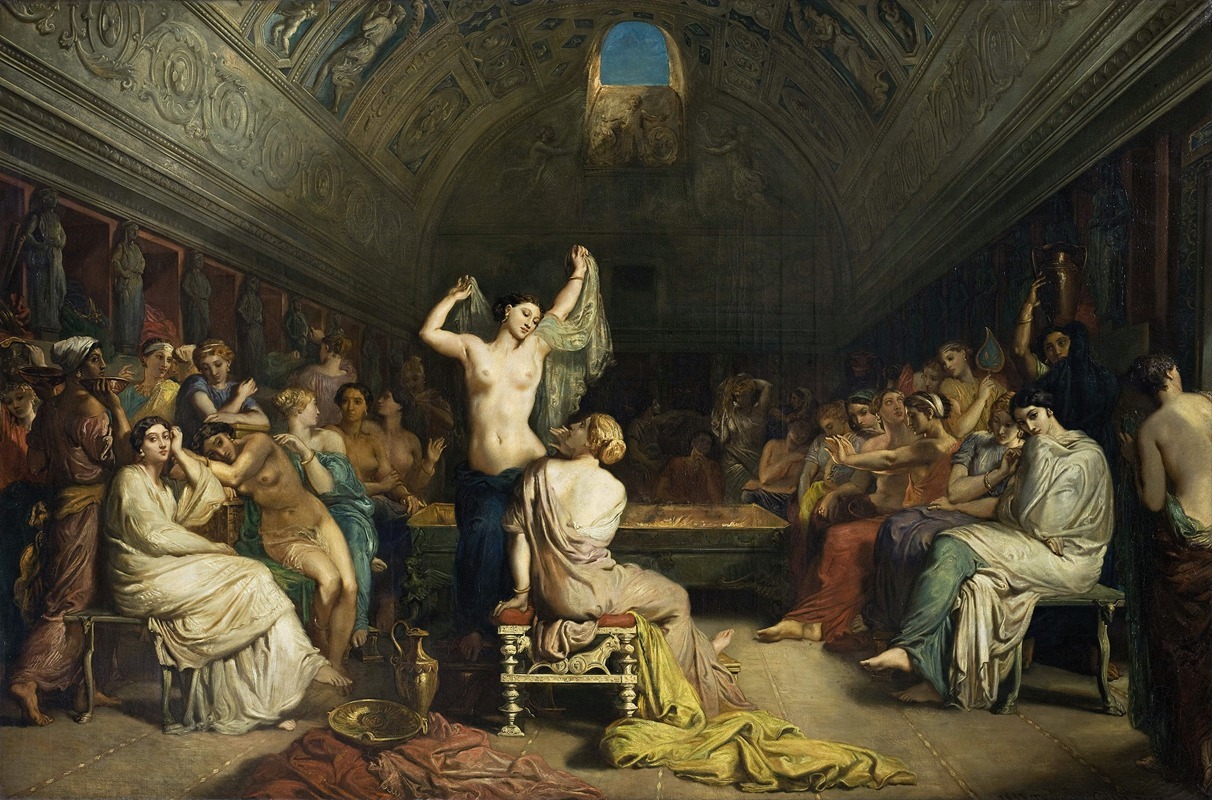
Tepidarium
A hand-painted replica of Théodore Chassériau’s masterpiece Tepidarium, meticulously crafted by professional artists to capture the true essence of the original. Each piece is created with museum-quality canvas and rare mineral pigments, carefully painted by experienced artists with delicate brushstrokes and rich, layered colors to perfectly recreate the texture of the original artwork. Unlike machine-printed reproductions, this hand-painted version brings the painting to life, infused with the artist’s emotions and skill in every stroke. Whether for personal collection or home decoration, it instantly elevates the artistic atmosphere of any space.
Tepidarium by Théodore Chassériau
Tepidarium is a painting created in 1853 by the French Romantic artist Théodore Chassériau. The artwork depicts a scene set in a Roman bathhouse, specifically the tepidarium, which was a warm room used for relaxation in ancient Roman bathing complexes. The painting is celebrated for its sensual and atmospheric qualities, as well as its masterful depiction of light and texture.
The composition features a group of women in various states of undress, lounging and engaging in leisurely activities within the tepidarium. Chassériau's use of soft, warm tones and delicate brushwork enhances the intimate and tranquil mood of the scene. The figures are rendered with a blend of idealized beauty and naturalism, showcasing the artist's skill in portraying the human form. The interplay of light and shadow on the figures and the surrounding architecture creates a luminous effect, drawing the viewer's attention to the central subjects while also emphasizing the luxurious ambiance of the setting.
Chassériau was heavily influenced by both the Neoclassical and Romantic movements, and Tepidarium reflects this synthesis. The painting demonstrates his admiration for classical antiquity, as seen in the subject matter and the architectural details, while also incorporating the emotional depth and sensuality characteristic of Romanticism. Chassériau's work often explored themes of beauty, exoticism, and the human experience, and Tepidarium is considered a prime example of his artistic vision.
The painting was exhibited at the Paris Salon of 1853, where it garnered significant attention and praise. Critics admired Chassériau's ability to evoke a sense of timeless elegance and his technical proficiency in rendering the human figure. Today, Tepidarium is regarded as one of Chassériau's masterpieces and a notable work within 19th-century French art.
The painting is housed in the Musée d'Orsay in Paris, France, where it remains a highlight of the museum's collection. It continues to be studied and appreciated for its artistic and historical significance, offering insight into Chassériau's unique style and his contribution to the Romantic movement.






